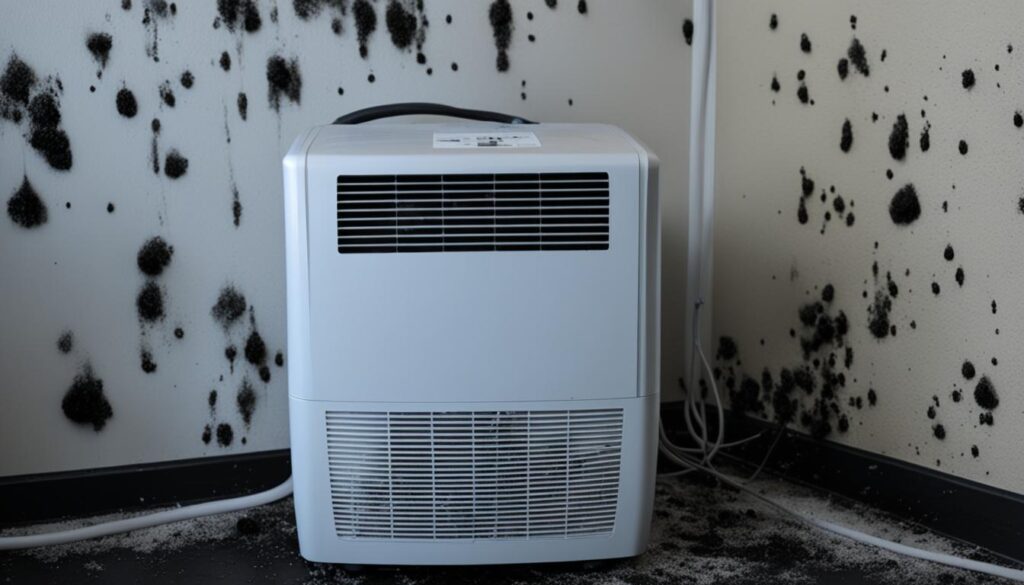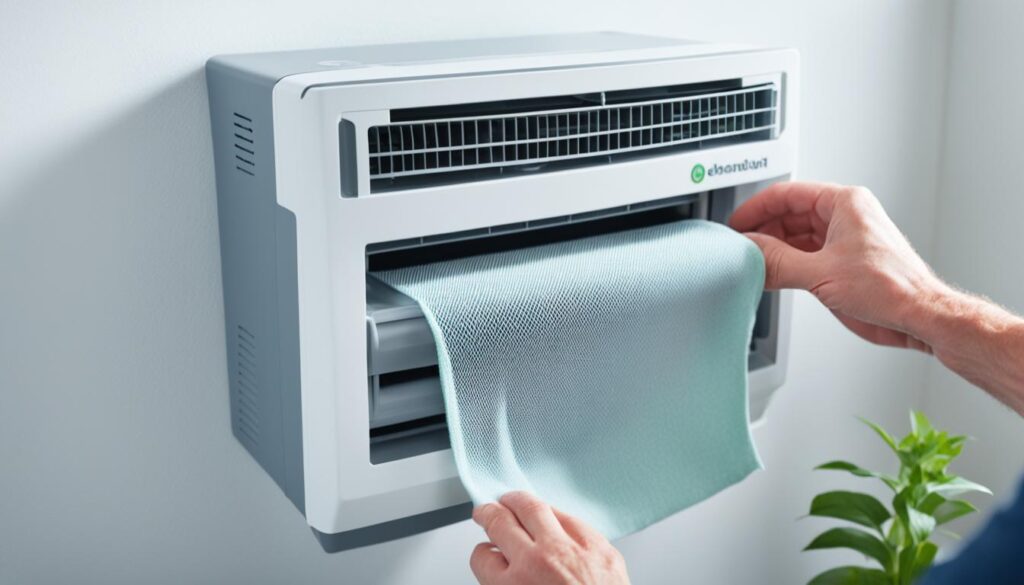
Exploring the World of Mold in dehumidifier: A Beginner’s Guide
Welcome to our beginner’s guide on understanding and tackling mold in dehumidifiers. In this article, we will delve into the importance of maintaining a healthier, humidity-controlled environment and provide you with practical steps to prevent and address mold growth in your dehumidifier.
A dehumidifier plays a crucial role in reducing excess moisture in the air, creating a comfortable living space for you and your loved ones. However, if not properly maintained, dehumidifiers can become a breeding ground for mold, compromising the air quality in your home and potentially posing health risks.
By exploring the world of mold in dehumidifiers, you’ll gain valuable insights into the risks, causes, and prevention methods associated with mold growth. Whether you’re a first-time dehumidifier owner or looking to enhance your existing knowledge, this guide is designed to equip you with the necessary information to maintain a mold-free environment.
To ensure a seamless reading experience and aid in your understanding, we have organized this guide into the following sections:
Understanding the Risks and Causes of Mold in Dehumidifier
Steps to Prevent Mold in Dehumidifiers
Conclusion
Key Takeaways:
- Regular maintenance and cleaning are essential to prevent mold growth in dehumidifiers.
- Excess moisture, improper maintenance, and contaminated air contribute to mold infestation.
- Proper placement and humidity control play a crucial role in mold prevention.
- Using high-quality filters and implementing routine inspections are beneficial in maintaining a mold-free dehumidifier.
- Addressing mold in dehumidifiers is vital for ensuring a healthier environment.
Understanding the Risks and Causes of Mold in Dehumidifier
Mold growth in dehumidifiers can pose several risks to your health and the integrity of your indoor environment. By understanding the common causes of mold growth in dehumidifiers, you can take proactive measures to prevent its development and ensure a healthier living space.
Risks of Mold in Dehumidifier
- Health issues: Mold spores released into the air can trigger allergic reactions, respiratory problems, and worsen asthma symptoms. Prolonged exposure to mold can have detrimental effects on your overall well-being.
- Structural damage: Mold growth in dehumidifiers can spread throughout your home, causing damage to walls, ceilings, and other surfaces. Mold can weaken the structural integrity of your property if left unaddressed.
- Poor indoor air quality: Mold spores can contaminate the air you breathe, leading to indoor air pollution. This can result in unpleasant odors, musty smells, and an overall uncomfortable living environment.
Causes of Mold Growth in Dehumidifier
Several factors contribute to mold growth in dehumidifier units. By understanding these causes, you can implement preventive measures to inhibit mold development and keep your dehumidifier functioning effectively:
- Excess moisture: Dehumidifiers are designed to remove excess moisture from the air. However, if the unit is overwhelmed by high humidity levels or lacks adequate drainage, it can become a breeding ground for mold.
- Improper maintenance: Neglecting regular cleaning and maintenance of your dehumidifier can result in the accumulation of dirt, dust, and other particles. Combined with a humid environment, this provides an ideal setting for mold growth.
- Contaminated air: If the air entering the dehumidifier is already contaminated with mold spores, bacteria, or other pollutants, the unit may inadvertently aid in their growth and spread.
It is essential to address these causes and minimize the risks of mold growth in your dehumidifier to maintain a clean, mold-free environment.
“Excess moisture, improper maintenance, and contaminated air can lead to mold infestation in dehumidifier units.”

| Risks of Mold in Dehumidifier | Causes of Mold Growth in Dehumidifier |
|---|---|
| Health issues | Excess moisture |
| Structural damage | Improper maintenance |
| Poor indoor air quality | Contaminated air |
Steps to Prevent Mold in Dehumidifiers
To ensure your dehumidifier remains mold-free and functions optimally, it’s essential to follow a few simple steps for prevention and maintenance. By taking proactive measures, you can create a healthier environment and prolong the lifespan of your dehumidifier. Here’s a step-by-step guide:
1. Regular Cleaning and Maintenance
Mold thrives in damp and dirty environments. Regularly clean your dehumidifier according to the manufacturer’s instructions. This includes removing and washing the water collection tank, cleaning the filter, and wiping down the exterior. By eliminating any accumulated dust, dirt, or moisture, you can prevent mold growth and ensure optimal performance.
2. Proper Placement
Where you place your dehumidifier can significantly impact its efficiency and effectiveness. Position it in a central location within the space you want to dehumidify. Make sure it has enough clearance for airflow and is away from walls or furniture that can obstruct airflow. This allows the dehumidifier to extract moisture evenly from the entire room and prevent stagnant air that encourages mold growth.
3. Humidity Control
Maintaining proper humidity levels is crucial for mold prevention. Set your dehumidifier to a recommended humidity level between 30% and 50%. This range inhibits mold growth while creating a comfortable, healthier environment. Use a hygrometer to monitor humidity levels and adjust the settings accordingly.
4. High-Quality Filters
Using high-quality filters is essential to capture mold spores and other airborne contaminants. Check your dehumidifier’s filter regularly and replace it as recommended by the manufacturer. This helps prevent mold from entering and spreading within the unit, ensuring cleaner air and reducing the risk of mold growth.
5. Routine Inspection Schedule
Implementing a routine inspection schedule ensures that your dehumidifier remains in optimal condition. Regularly check for any signs of mold, excessive moisture, or unusual odors. Additionally, inspect the drainage system for clogs or leaks. By detecting and addressing any issues promptly, you can prevent mold growth and maintain the efficiency of your dehumidifier.
Prevent Mold and Enjoy a Mold-Free Environment
By following these actionable steps for preventing mold growth in your dehumidifier, you can create a cleaner, healthier environment. Regular cleaning, proper placement, humidity control, using high-quality filters, and routine inspections are key to maintaining a mold-free dehumidifier. Take proactive measures today to ensure the longevity and efficiency of your unit, and enjoy the many benefits of a mold-free space.
| Steps to Prevent Mold in Dehumidifiers | Benefits |
|---|---|
| Regular Cleaning and Maintenance | – Prevention of mold growth – Optimal performance |
| Proper Placement | – Even extraction of moisture – Airflow efficiency |
| Humidity Control | – Mold inhibition – Comfortable environment |
| High-Quality Filters | – Cleaner air – Reduced mold risk |
| Routine Inspection Schedule | – Prompt issue detection – Efficient maintenance |

Conclusion
In conclusion, addressing mold in dehumidifiers is crucial for maintaining a healthier environment and preventing potential health issues. Throughout this guide, we have explored the risks and causes of mold growth in dehumidifiers, as well as the steps you can take to prevent it.
By following the guidelines and tips provided, you can successfully tackle mold growth in your dehumidifier and enjoy the benefits of a mold-free, humidity-controlled space. Regular cleaning and maintenance, proper placement, and humidity control are key factors in mold prevention.
Remember, a mold-free dehumidifier not only promotes a healthier living environment but also helps to protect your respiratory health. By implementing these preventive measures, you can ensure that your dehumidifier functions optimally, providing you with clean and fresh air.




